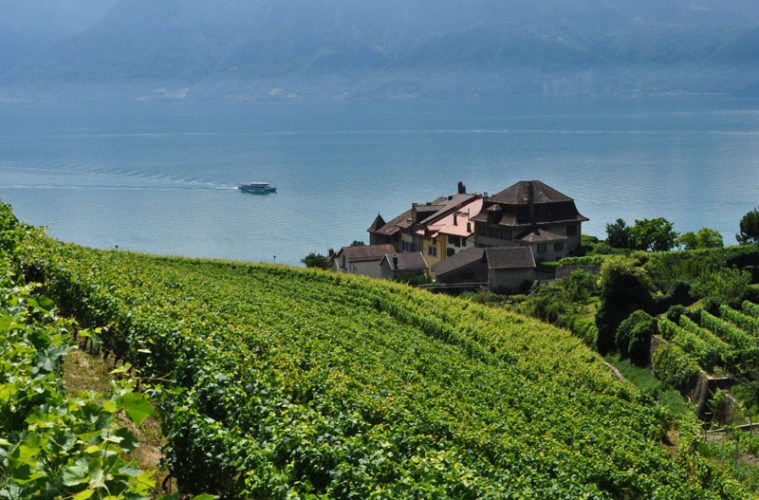Head to Switzerland for breathtaking scenery, fine cuisine and marvellous wines
Lausanne, a charming city on the shores of Lake Geneva, is surrounded by forests and is popular with walkers, cyclists and mushroom hunters. But it’s the picturesque Auberge du Chalet des Enfants that most food-loving visitors are after in these woods.
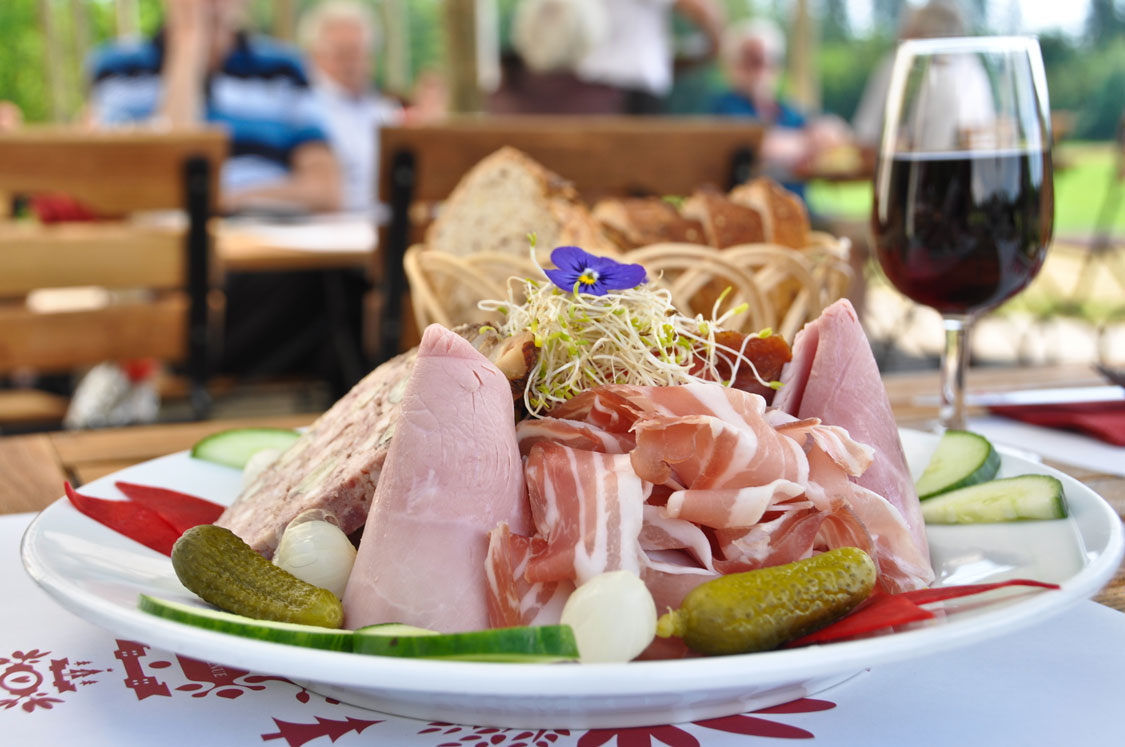
Hearty farm platter at Auberge du Chalet des Enfants.
A simple farmhouse, it is one of the most appealing restaurants in the winelands of Switzerland. The Chalet is a simple place, offering a seasonal menu of local specialities: a platter of local charcuterie, Raclette fondue, a terrine of pork and hazelnuts or a salad with a goat’s cheese tart. From the terrace, the view is of forests and fields and Swiss cows with their clanking bells.
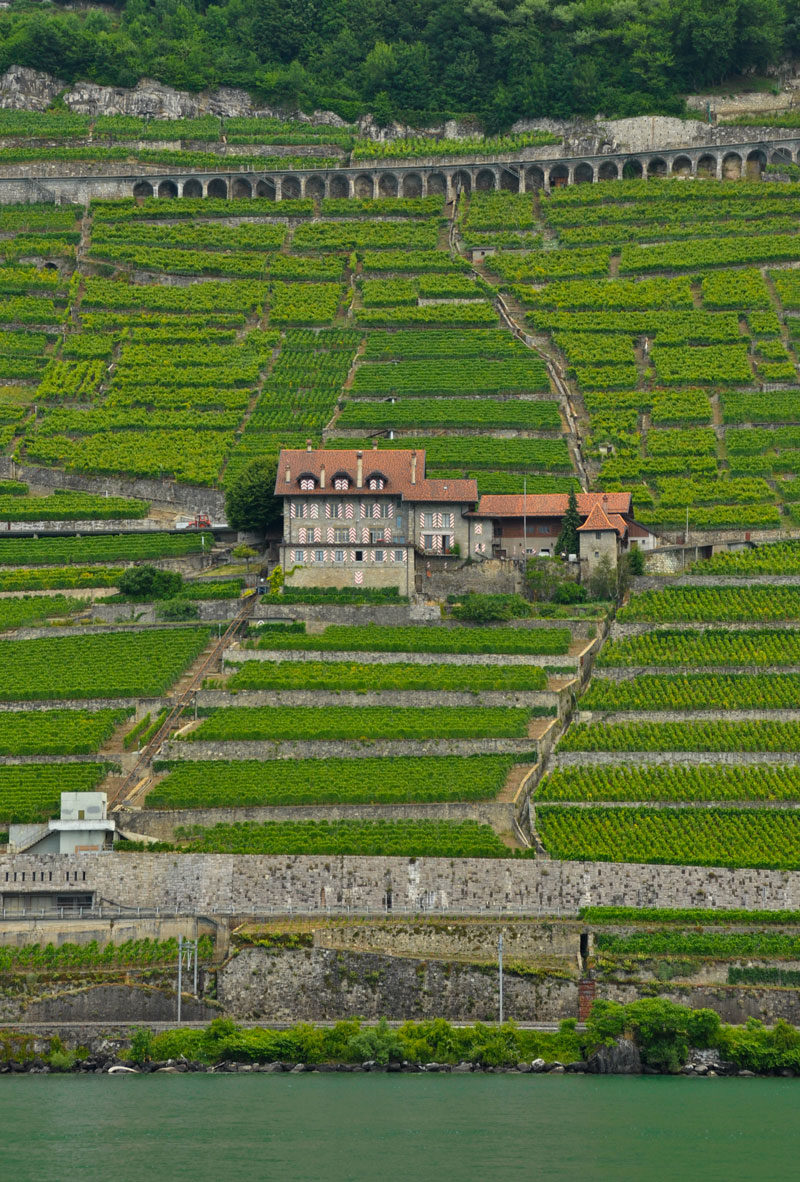
View of the ancient vineyard terraces from Lake Geneva.
There are louder bells that peal from the tower of the Cathedral de Lausanne. Easily the most remarkable site in the city, this 1 000-year-old cathedral has long been a stop on pilgrimages across Europe and traditions still loom large. Every night, from 10pm until 2am, a lookout in the tower calls the hour over the city. From the hilltop cathedral, cobbled lanes and charming shopping streets run down towards Lake Geneva, where on long summer evenings, the Lausannois come to socialise on the wide promenade and at lakefront restaurants. It’s also where the lake’s regular ferry services depart, connecting the towns that line the shore.
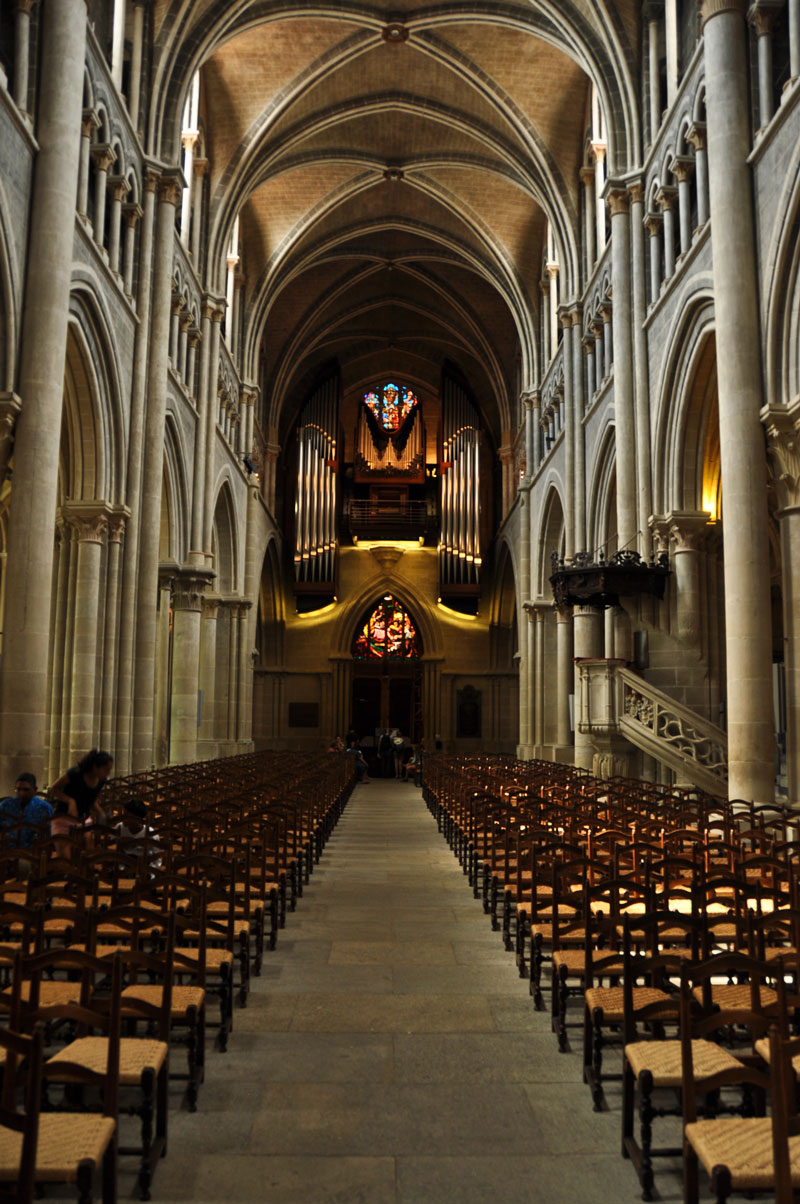
Cathedral de Lausanne
Motoring out into the lake, fishermen wave while checking their lines for the popular fera white fish. Across the water, the French city Evian glints in the sunshine. The days are warm in the middle of summer, but snow still caps the highest peaks. As with so much of Switzerland, the beauty makes it hard not to stare at the lakeside homes with their sailing boats bobbing at anchor.
Lavaux is no exception in the looks department and was declared a World Heritage Site in 2007. The steeply terraced vineyards that stretch for 30km along the northern banks of the lake, have been tended for almost 1 000 years.
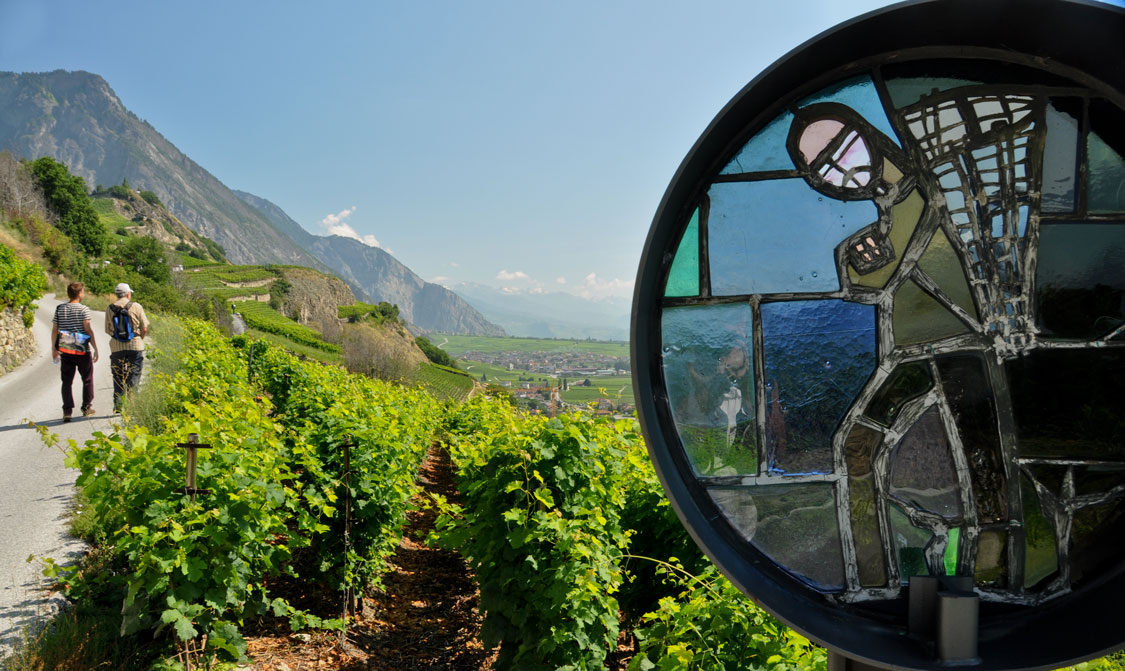
Sentier des Vitraux vineyard walk in Saillon.
First planted by monks, their construction is a marvel that sees miniscule patches of vineyard terraced by stone walls. The slopes are so precipitous that everything from planting and pruning to harvesting is done by hand, and growers still carry the buckets of grapes from vine to cellar on foot. Alongside excellent Pinot Noir, Lavaux is renowned for producing Chasselas, a white wine that’s low in alcohol and acidity, so it’s very quaffable. Tempting as it may be to while away the afternoon overlooking the lake with glass in hand, there’s more to explore, even if you’re not much of a vinophile.
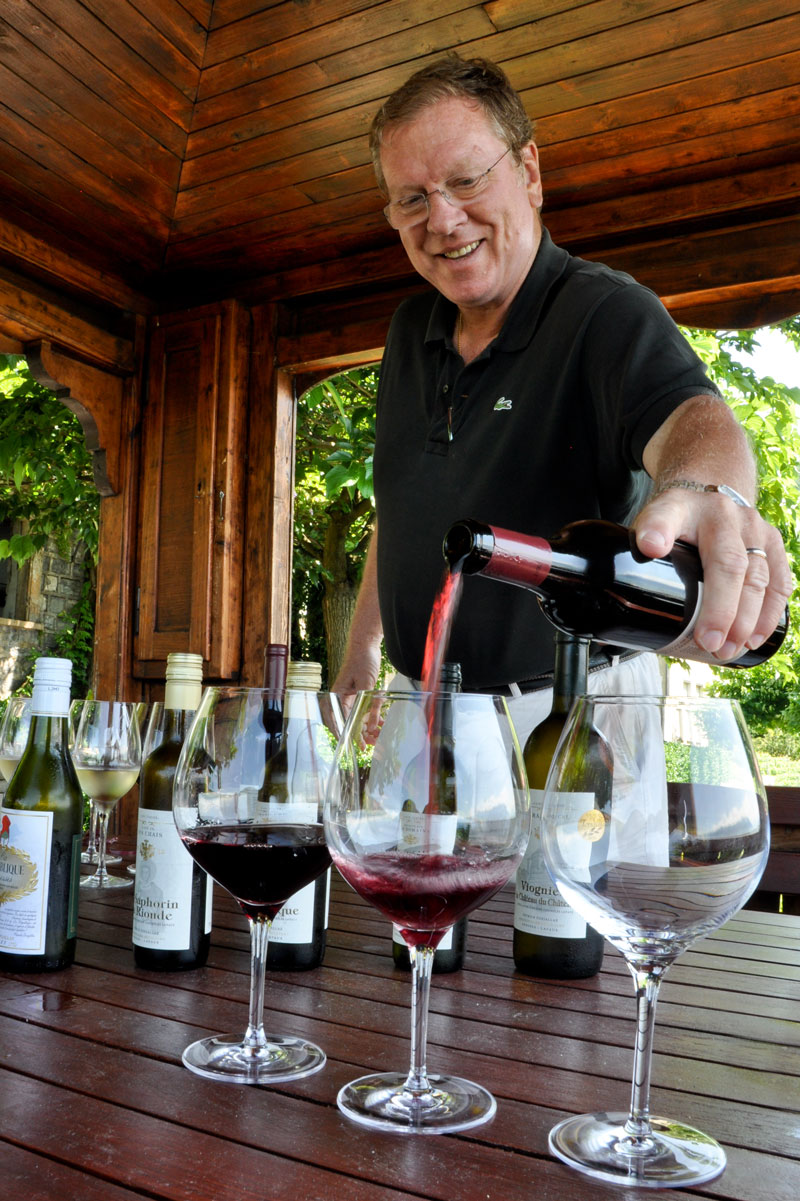
Patrick Fonjallaz pours some Pinot
In the village of Cully, one of many lakeside towns you can visit, restaurants are scattered around a central square, vines press in from all sides and the waters of the lake twinkle between narrow winding alleyways. You’ll find it difficult to keep your camera in your pocket. So too on the winding walking trails that meander from Saint-Saphorin to Lutry, with their beautiful views of the lake and vineyards, together with the sight of the distant Alps. Good to know is that if you don’t fancy tackling the steep slopes on foot, a quirky Lavaux Express tourist ‘train’ (tractor and trailer) departs from the Lutry pier for sightseeing trips and tastings at a handful of local cellars.
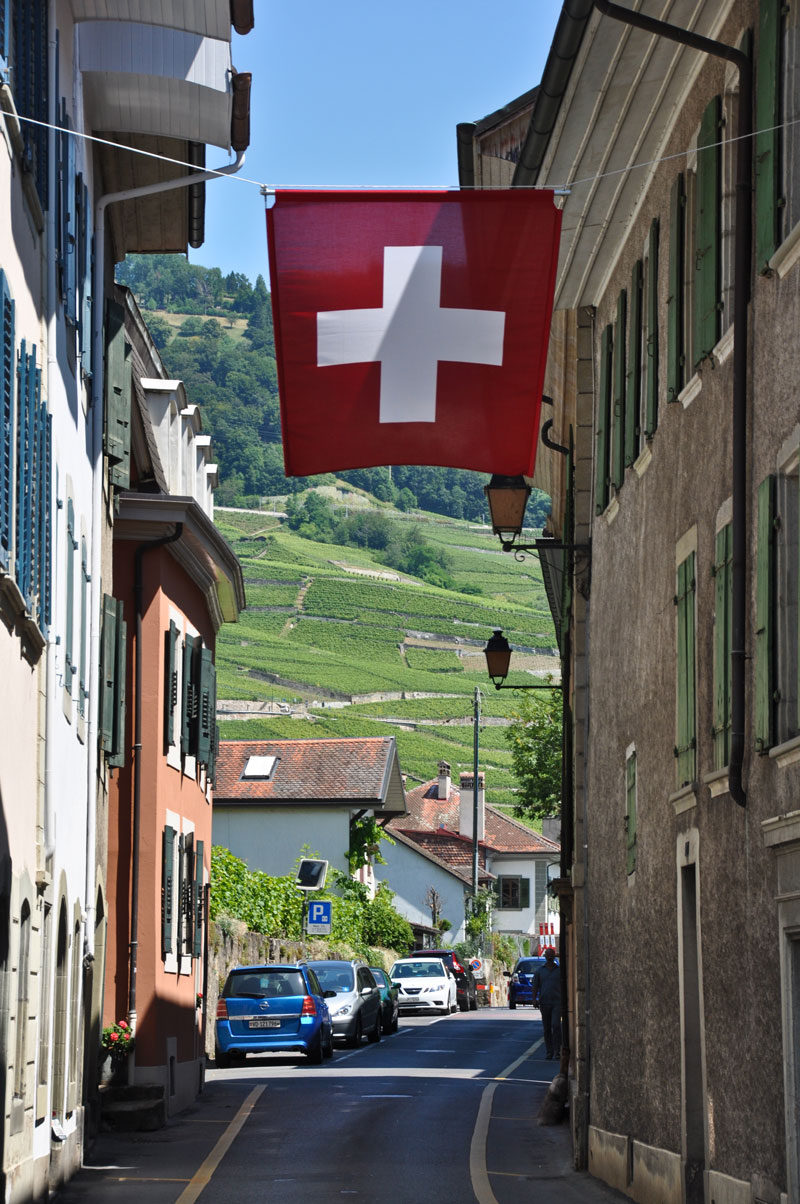
Village of Cully
A Swiss Pass allows you to hop on and off trains as needed. Along the shores of Lake Geneva and into the canton of Valais, the terraced vineyards give way to a scenic mix of vine and orchard, fed by the famous Rhône River as it winds its way towards Lake Geneva. It’s a glorious valley of quaint villages and patchwork vineyards, where the vines dictate the pace of life. It’s a pace that veers towards soporific in all the right ways – lunches are languid and the wine ever-present. In both language and lifestyle, this is quite clearly the French not German corner of Switzerland. And yet the cuisine is unerringly Swiss. Eaten all year, Raclette is an institution in these parts. Inevitably, it’s accompanied by a glass of Fendant, the local name for the white wine known in Lavaux, as Chasselas.
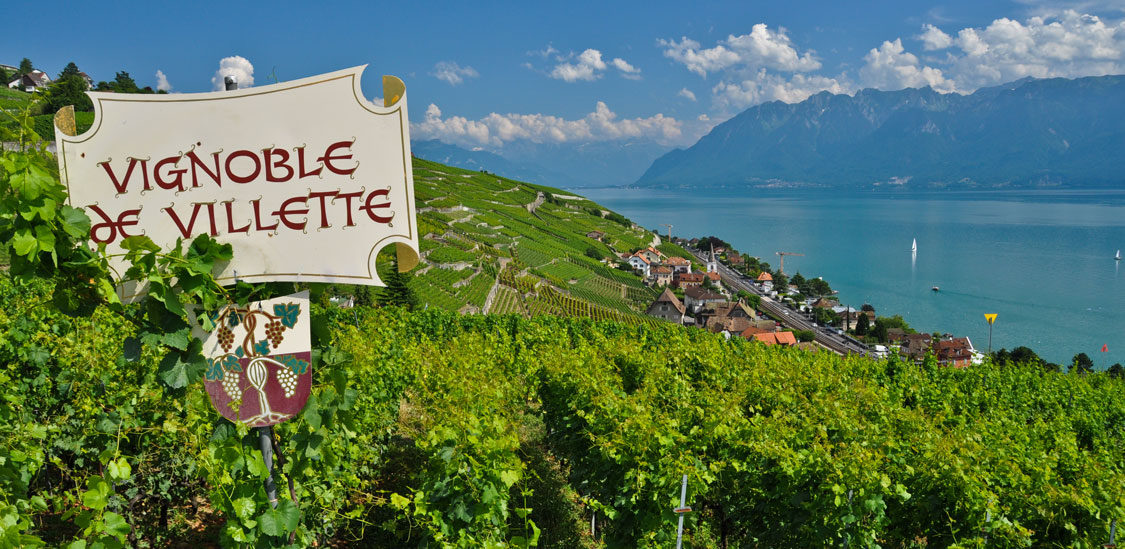
View at Laraux.
But if you’re in Switzerland, and no matter good the wine is, you simply can’t leave without a taste of the high pastures. And it’s no trouble to reach the town of Grimentz, some 1 500m above sea level. A local Postebus runs regularly from Sierre, delivering happy day-trippers to this pretty village. In winter it’s a haven for skiers, while in midsummer, hikers in sensible shoes are commonplace. And beyond town, glaciers and peaks await the adventurous.
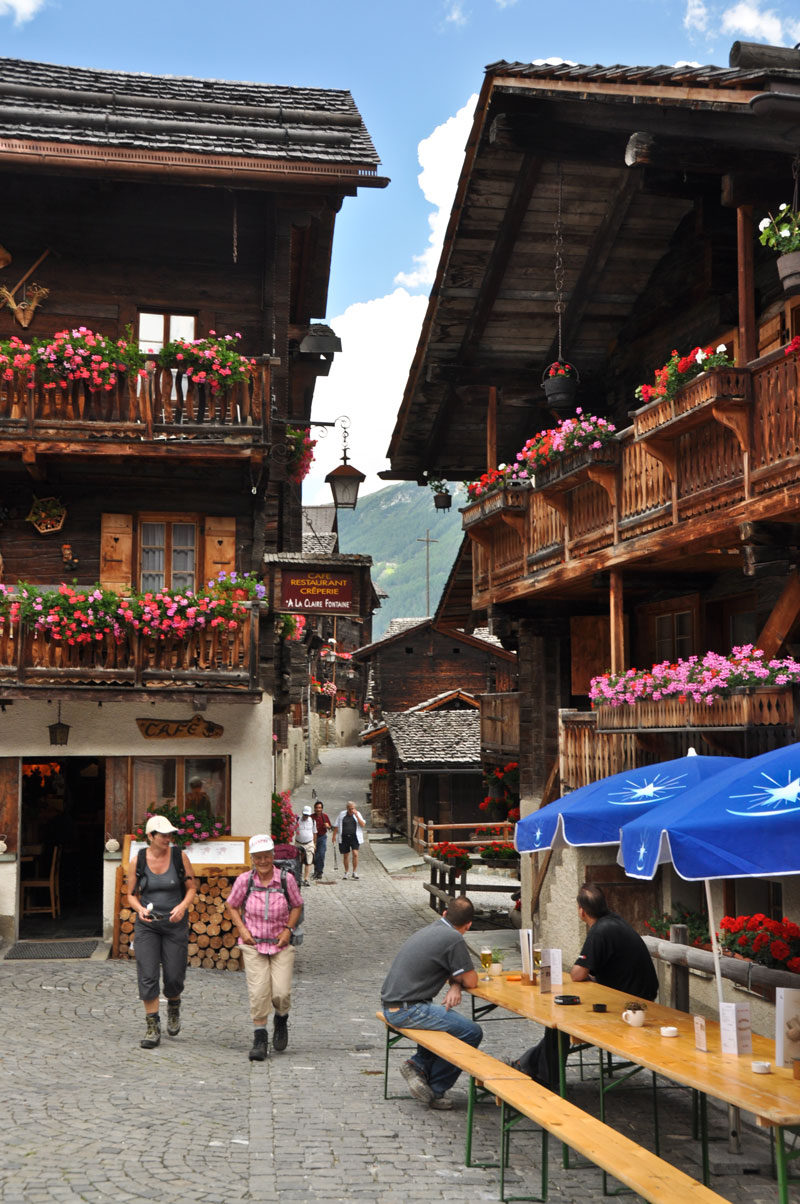
Chocolate-box scenery in Grimentz.
TRAVEL TIPS
MUST-EAT DISH: Raclette of course, and a traditional tarte à la raisinée – delicious with an espresso.
GO WINE TASTING: Lavaux Vinorama in Rivaz is a great place to taste a selection of Lavaux wines in a central setting with knowledgeable staff.
TAKE A FERRY TRIP: The views are superb on Lake Geneva or any Swiss lake for that matter.
TRY THE FLY RAIL SERVICE: Ask your travel agent about this service, which will have your luggage delivered from Zurich airport to your first hotel in Switzerland.
PLANNING YOUR TRIP
GETTING THERE: Swiss International Air Lines flies daily from Jo’burg to Zurich. Visit swiss.com or call 0860 04 05 06.
GETTING AROUND: With a network of trains and buses connecting even the smallest villages, Swiss public transport is arguably the best in the world. A Swiss Pass allows hop-on, hop-off access to the system and is the easiest way to travel. Visit swiss-pass.ch
VISAS: South African passport holders require a Schengen visa to enter Switzerland. Visit eda.admin.ch
WHERE TO STAY: There’s no shortage of delightful small hotels across Switzerland and your budget will usually be the deciding factor. One hotel well worth factoring in is Hôtel Bella-Tola in St-Luc. Visit bellatola.ch
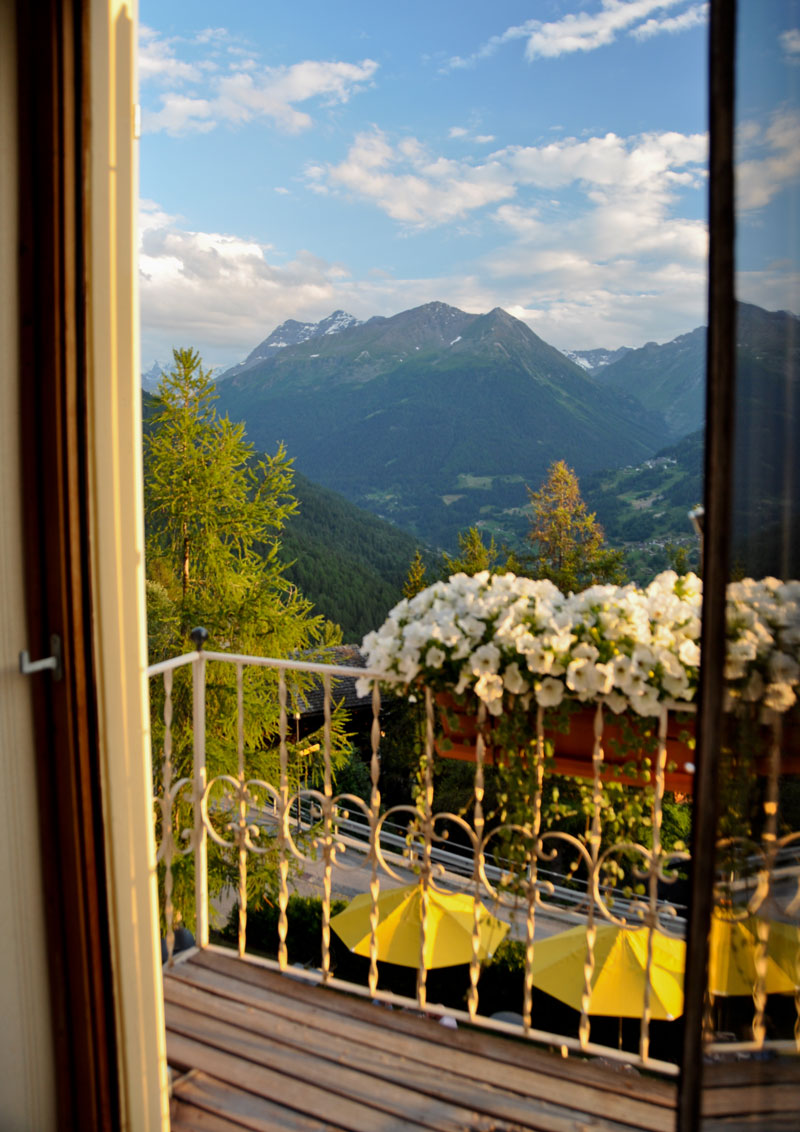
Jaw-dropping views from St-Luc.

